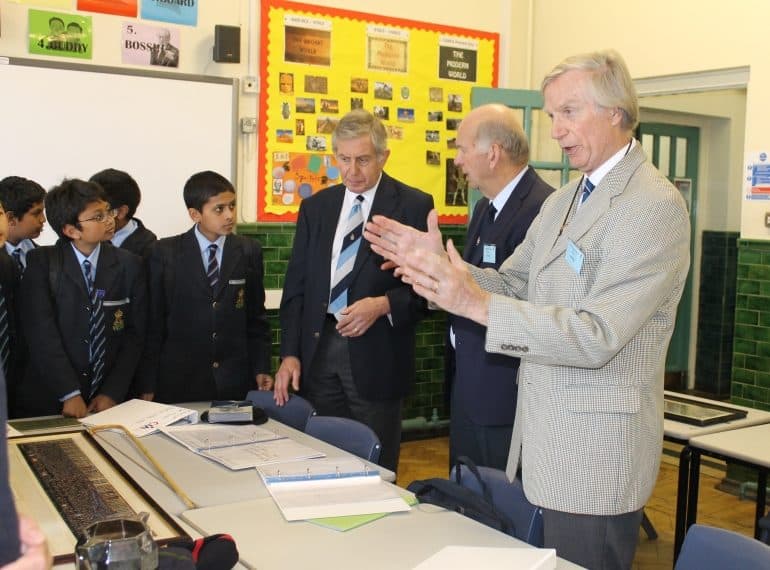
Three Old Elizabethans from the post-war generation have been working with today’s youngest QE boys as part of a new Year 7 History project about the School.
Kenneth Cooper (1942–1950), Alan Solomon (1951–1957) and John Keeley (1956 – 1963) regaled pupils with their experiences as schoolboys from the early 1940s to the early 1960s during a specially organised visit to the School.
The Year 7 boys were naturally very keen to hear about the discipline (the cane from Headmaster E H Jenkins – although the trio were not necessarily speaking from first-hand experience!) and the “horrible” School dinners. These were eaten in the Main Hall, as the refectory that was bombed during World War II was not rebuilt for many years.
The three alumni spoke to the whole of Year 7 in the Shearly Hall about their experiences. Earlier in the day, they met a smaller number of boys in the History Club, discussing a number of archival artefacts that had been laid out, including an old School cap and blazer.
All three visitors are actively involved with the Old Elizabethans’ Association. Kenneth (‘Ken’) Cooper, School Captain in 1949, was until recently Vice-Chairman of the School’s Governing Body; he is still a Governor and sits on several Governing Body Committees. John Keeley was part of the 1962 QE trip to Russia – reportedly the first-ever visit by a British school party to the Soviet Union.
The Summer Term project on the history of the School was organised by Helen MacGregor, Head of History. Thanking the three for their involvement, she said: “I really want the boys to understand both the changing and the continuity of the School through time.”
The project focused on distinct periods:
- The founding of the School
- The Civil War
- World War I
- World War II
- The post-war period
- The modern period, looking to the future.
The Year 7 boys have also been to visit the School’s original building, Tudor Hall, in Wood Street as part of this project. QE relocated from Tudor Hall to the current Queen’s Road site in 1932.
